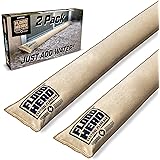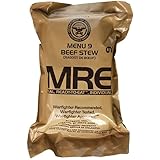Hey there! If you’re like me and always prepared for anything life throws at us—be it a camping trip or a natural disaster—then you know the importance of having a portable emergency sanitation kit. Today, I want to share my personal tips on building such a kit from scratch. Trust me, it’ll give you peace of mind when you’re in a pinch!
Choosing the Right Container
Size and Type
First things first, let’s talk about the container. You want something that’s sturdy and waterproof to keep everything intact. I personally like hard plastic bins because they can handle a little roughhousing. Make sure it’s big enough to fit all your supplies without being too bulky to carry around.
If you have a backpack with a few compartments, that might work too. I’ve had success with those large hiking backpacks; they’re lightweight and easy to lug around. Just make sure it’s comfortable since you might have to carry it for a while!
Finally, go for something that seals well. You don’t want your items floating around or getting wet. Look for containers with secure lids, or even consider vacuum-sealed bags for extra protection!
Accessibility and Organization
Once you’ve picked the perfect container, the next step is organizing what goes inside. Think about accessibility because in an emergency, you don’t want to be digging around for what you need. That’s just frustrating, right?
I like to use smaller pouches or Ziploc bags within the main container. Label each one clearly—trust me, it makes a world of difference when you’re under pressure! I usually separate items into categories: hygiene supplies, waste disposal, and cleaning products.
Keeping it organized also helps you keep track of what you have, so you can quickly assess if you need to replenish anything after use. After all, we don’t want to be unprepared next time!
Durability and Transport
Your container should be durable enough to withstand the elements and the occasional bump. I can’t stress this enough! During my last camping trip, our cooler lid broke, and let’s say my ice was more like soup by the end of the trip. You want something that won’t let you down.
== > What if ... Get a FREE Subscription to PREPARE
Adding comfortable straps or handles can make transport much easier. If it’s a backpack, ensure the straps don’t chafe when you’re in a hurry. I once took a three-day hike, and let me tell you, comfy straps make all the difference!
You could also consider a container with wheels if you plan on rolling it around and it’s somewhat heavy. Think about your situation when choosing options—it’s all about what works best for you!
Gathering Essential Supplies
Hygiene Items
Now it’s time to pack those hygiene essentials. In my kit, I always include travel-sized soap, shampoo, hand sanitizer, and wet wipes. You’d be amazed by how handy wet wipes are when clean water is scarce!
Don’t forget about toothpaste and a toothbrush! It might seem trivial, but maintaining oral hygiene can boost your morale when you’re in a less-than-ideal situation.
If you’re camping or in an emergency, I strongly recommend including a roll of toilet paper or portable toilet bags. You just never know when you’ll need them—trust me!
Waste Disposal Solutions
This is crucial! In any situation, we need a plan for waste disposal. I have some portable toilet bags that I absolutely love. They’re easy to pack and can handle whatever life throws at you.
Think about disposable gloves as well—these add an extra layer of protection when dealing with waste. They may seem like a small item, but they’re invaluable when you’re trying to keep things sanitary.
I also carry a small shovel for more serious situations—like when you gotta go in the wild. It’s a bit of a hassle, but it’s a lifesaver for respecting nature and leaving no trace!
Cleaning Supplies
Next up is cleaning essentials. A small bottle of bleach can be a game-changer for sanitizing surfaces, and I always add a sponge or two for scrubbing needs. Make sure you have those disposable cloths too; they’re perfect for one-time-use and avoid carrying dirt around!
Get Preparedness and Self-Reliance Tips. Subscribe Now!
Antibacterial wipes are another must-have since they offer a convenient way to clean your hands and surfaces when water isn’t available. Always beneficial to have a solid first-aid kit too—band-aids and antiseptic wipes can come in handy.
Lastly, don’t forget about trash bags. They help keep everything neat and tidy, and no one wants a smelly kit, right? You’d be surprised how quickly stuff can pile up!
Staying Informed
Understanding Local Risks
To build a comprehensive sanitation kit, you’ve got to know what you’re preparing for. I always recommend researching local risks. If you live in an area prone to floods or wildfires, customize your kit for those specific challenges.
Staying informed about local emergencies makes you better prepared. It might be wise to join community groups or online forums where folks share their experiences and tips! I’ve learned tons from local experts who’ve lived through emergencies.
Sometimes, local agencies also provide resources or meetings that can help you understand what to expect. It may sound boring, but it can be an enlightening experience!
Education and Training
Don’t just stop at packing your kit—take some time to educate yourself! There are plenty of courses out there on emergency preparedness, and some of them even give you hands-on experience.
Plus, knowing how to properly use your supplies is essential. You wouldn’t want to be fumbling with a first-aid kit when someone needs help—practice makes perfect!
A lot of organizations offer free workshops or even community training sessions. Attend one if you can; it’s a great way to meet like-minded people and learn a thing or two!
Regular Maintenance and Updates
Okay, so once your kit is packed, you’ve got to keep it fresh. I check my kit every six months to see what needs replacing or replacing expired items. It’s not a fun chore, but vital for ensuring your safety!
Make a checklist of what you have in your kit, and make it a point to update your supplies based on seasonal needs. For example, heavy-duty cold-weather gear should be packed in case of winter emergencies.
Finally, ask friends to do the same. Sometimes, their needs can spark ideas for what you might need to add to your own kit. Two heads are better than one!
Conclusion
So there you have it! Building a portable emergency sanitation kit isn’t as daunting as it may seem. With a little organization and the right supplies, you can ensure that you’re well-prepared for any situation. Remember to keep it light, accessible, and maintain it regularly. Your future self will thank you!
FAQ
What items should I prioritize in my sanitation kit?
Focus on hygiene items, waste disposal solutions, and cleaning supplies. Make sure you include travel-sized soap, toilet paper, gloves, and sanitizer as your must-haves.
How often should I check my emergency sanitation kit?
I recommend checking it every six months to replace any expired items and to restock supplies that have been used.
Is it necessary to include bleach in my kit?
While not absolutely necessary, having a small bottle of bleach is helpful for sanitizing surfaces. Just make sure to handle it safely!
What is the best way to carry my sanitation kit?
Choose a container that’s durable and comfortable. A hard plastic bin or a large backpack works well. Ensure it’s easy to carry since you might need to transport it in an emergency.
How do I know what local risks to prepare for?
Research your area’s history of natural disasters or emergencies. Joining local preparedness groups can also help you stay informed about potential risks in your community.






